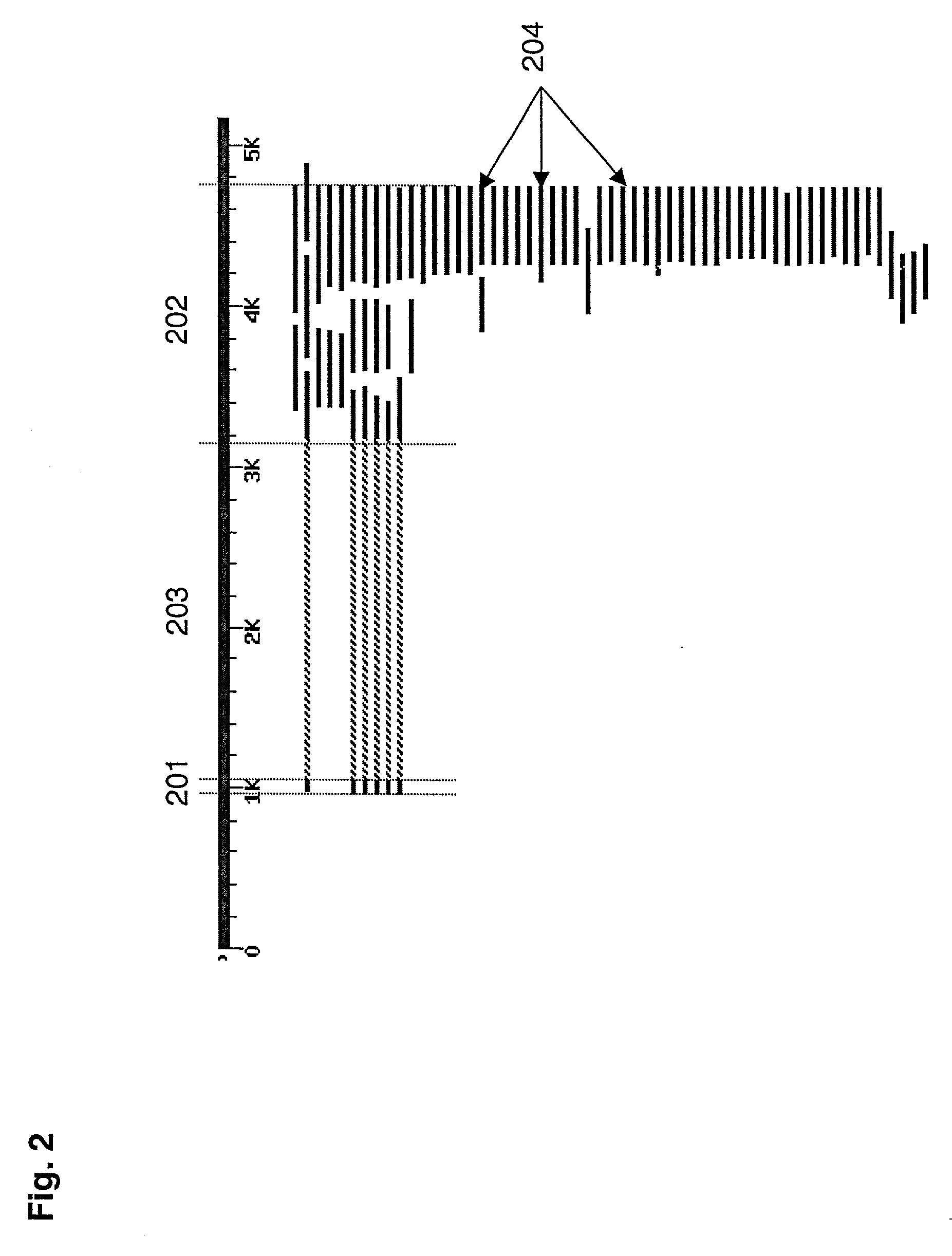Gene discovery using microarrays
a microarray and gene technology, applied in the field of gene discovery, can solve the problems of ineffective finding of genes via open-reading frames, inconvenient locating of such sequences, and insufficient reading frame information, etc., and achieve the effects of improving the structure of the gene, high resolution, and robustness
- Summary
- Abstract
- Description
- Claims
- Application Information
AI Technical Summary
Benefits of technology
Problems solved by technology
Method used
Image
Examples
example 1
[0147] The 5161 bp region of human chromosome 2 that contains the chemokine receptor gene CXCR4 was analyzed using the methods of the invention. The genomic organization of the CXCR-4 gene has been extensively studied, and it is known that the gene contains 2 exons of 103 and 1563 bp interrupted by a single 2132 bp intron (Wegner et al., 1998, J. Biol. Chem. 273:4754-60). FIG. 2 shows the position of the two exons by mapping ESTs onto the genomic sequence of the CXCR-4 gene.
[0148] A tiled genome array was generated in two steps. First, the 5161 bp region from human chromosome 2 (Genbank Accession Number Af005058) was parsed into a list of 5101 60-mers for probe selection. This list of possible probes was analyzed by the RepeatMasker computer program, which identified 110 of the potential probes as containing regions of low information content (e.g., repetitive elements, simple repeats, or polyX repeats); these 110 sequences were eliminated from further analysis. Second, a high-densi...
example 2
[0152] Presented by way of example, but not limitation, FIG. 5 shows a flow chart diagram illustrating a preferred embodiment of the methods of the invention.
example 3
[0153] The Complementary Strand Filtering Method was evaluated for its ability to recognize and filter false positive hybridization signals resulting from cross-hybridization by analyzing the 180,361 bp region of human chromosome 13q14.2 containing the human Retinoblastoma (Rb) gene using the methods of the invention. The genomic organization of the Rb gene has been extensively studied, and it is known that the gene contains 28 exons that are spliced together to generate a 4,561 bp transcript (see, e.g., Toguchida et al., 1993, Genomics 17:535-543; Friend et al., 1986, Nature 323:643-646).
[0154] A tiled genome array was generated in two steps. First, the 180,361 bp region from human chromosome 13 (Genbank Accession Number L11910) was parsed into a list of 180,300 60-mers for probe selection. This list of possible probes was analyzed by the RepeatMasker computer program, which identified 11,520 of the potential probes as containing regions of low information content (e.g., repetitive...
PUM
| Property | Measurement | Unit |
|---|---|---|
| volumes | aaaaa | aaaaa |
| volumes | aaaaa | aaaaa |
| mean melting temperature | aaaaa | aaaaa |
Abstract
Description
Claims
Application Information
 Login to View More
Login to View More - R&D
- Intellectual Property
- Life Sciences
- Materials
- Tech Scout
- Unparalleled Data Quality
- Higher Quality Content
- 60% Fewer Hallucinations
Browse by: Latest US Patents, China's latest patents, Technical Efficacy Thesaurus, Application Domain, Technology Topic, Popular Technical Reports.
© 2025 PatSnap. All rights reserved.Legal|Privacy policy|Modern Slavery Act Transparency Statement|Sitemap|About US| Contact US: help@patsnap.com



